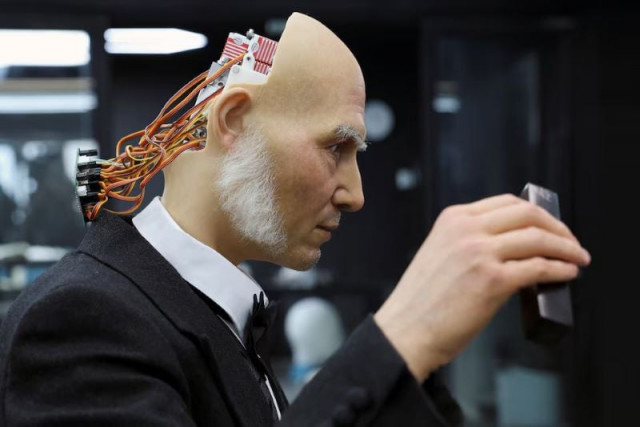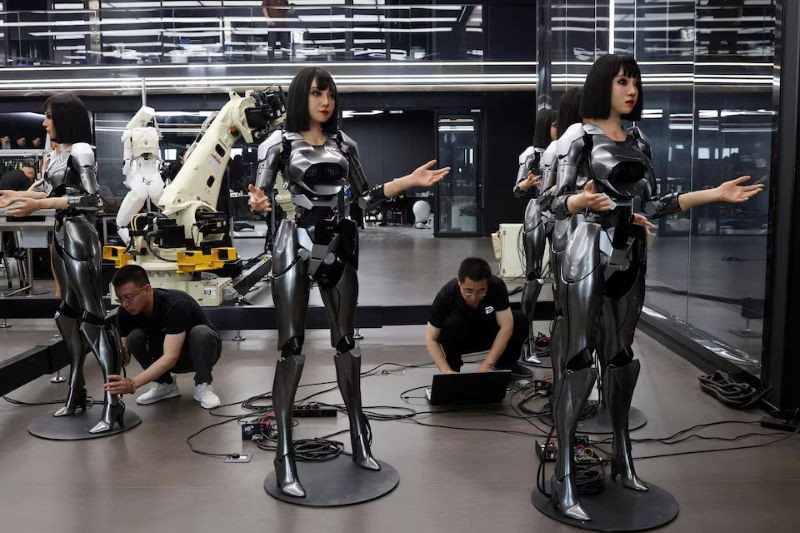China develops humanoids with more facial movement and emotions
Apple announced Iphone with ChatGPT and Artificial intelligence for several devices

On the floor of the Ex-Robots factory in China's northeastern coastal city of Dalian, engineers develop humanoid robots with a focus on enhancing facial expressions and emotions.
Neck-length silicone masks lie sprawled on a table alongside silicone arms and feet, while disembodied heads sit on display and humanoid robots in various stages of construction stand nearby. Drawings of robot designs adorn a wall.
"We have our own software and algorithm teams," said Ex-Robots Chief Executive Li Boyang, adding that humanoid robots are the most complex class of robotic products.
"There are many basic models and algorithms that are commonly open source, which everyone uses. However, we concentrate more on how to enable the AI to recognise and express expressions and emotions."

As an Ex-Robots worker moves her head, smiles and sticks out her tongue, a humanoid robot mimics her movement thanks to tiny motors installed in several spaces in its head.
"We are also working on the foundation model. The model we're making is multi-modal and capable of emotional expression. It can perceive the surrounding environment and produce appropriate facial feedback," Li said.
Ex-Robots said it takes from two weeks to a month to produce a humanoid robot, with prices ranging from 1.5 million yuan ($207,000) to 2 million yuan.
Read: Nvidia adds generative AI to power humanoid robots
The main purpose of the company's robots so far is for display in museums, one of which Ex-Robots has housed in the same building as its factory.
Looking ahead, Li believes humanoid robots will have a bigger role to play in the healthcare and education industries.
"Psychological counselling and health are certainly future application scenarios. We are currently conducting related research, such as auxiliary treatment and preliminary screening for emotional and psychological disorders," he said.
"Moreover, I believe that emotional interaction has broader applications in service fields, such as those aimed at children."



















COMMENTS
Comments are moderated and generally will be posted if they are on-topic and not abusive.
For more information, please see our Comments FAQ